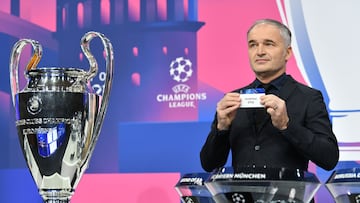CHAMPIONS LEAGUE
The AI conspiracy theory in the new Champions League
A supercomputer will automatically decide the opponents for each team, raising suspicions among fans.

The new Champions League format, featuring 36 teams in a league-style competition, marks a revolutionary change this season. The traditional group stage will be replaced by an expanded structure where clubs will face eight different opponents (two from each pot, one at home and one away). Despite this, the qualifying stage will feature a single table that includes all 36 participants, regardless of the specific teams they play against.
Another significant change is the introduction of a new draw process, which will take place on August 29 in Monaco. For the first time, software will determine the matchups between teams. This shift has sparked numerous concerns among fans, who are accustomed to the transparency of witnessing an impartial hand draw the groups. Now, they must place their trust in a computer algorithm.
Additionally, the potential risk of a cyber attack—a growing concern for any large organisation—adds to UEFA’s challenges with this drastic change in format.

How does the new Champions League format work?
In a media briefing, Giorgio Marchetti, UEFA’s director of football and general secretary, and Tobias Hedstück, UEFA’s head of competitions, provided a detailed explanation of the new draw procedure. They were joined by David Gill, head of technology at AE Live, the IT company responsible for managing the technological aspect of the draw. Many questions focused on how the public will perceive a computer determining the matchups for each team.
As in previous years, a UEFA ambassador will serve as the master of ceremonies. The process involves four pots, each containing nine balls. When a ball is drawn from Pot 1, the computer will instantly assign eight opponents to that team. Clubs from the same country cannot be drawn against each other, and no team can face two opponents from the same league.
Once a team’s opponents are determined, the next team is drawn, with the options becoming increasingly limited as some teams will have already been assigned. This process will continue for teams in Pot 2 (who will already know their opponents from Pot 1), Pot 3 (who will know those from Pot 1 and Pot 2), and Pot 4 (who will know their matchups from all previous pots).
In an example provided by UEFA, PSG were drawn against Inter, Barcelona, Arsenal, Leverkusen, PSV, Sporting de Portugal, Celtic, and Stuttgart. This lineup illustrates the increased difficulty and heightened interest that this new format is expected to bring to the tournament’s first phase.
The match schedule will be announced the following day, as usual, through a computer system that considers television criteria to differentiate teams from the same country. The new Champions League format is now in place, and the first concern lies in the draw, which is fully automated and electronic, with all the implications that brings.





